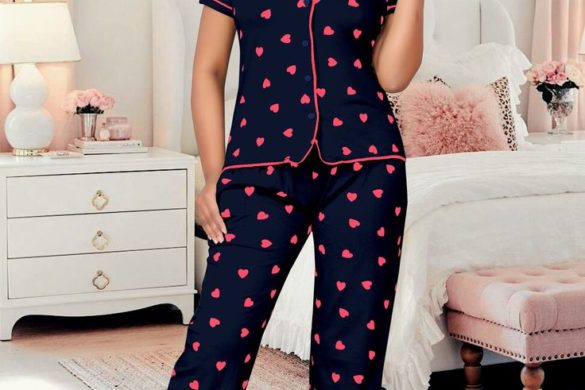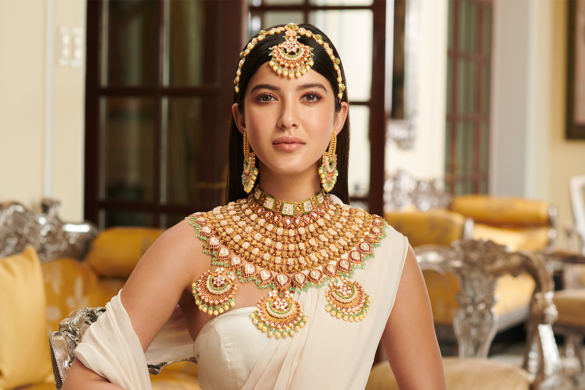The traditional Indian clothing known as “embroidered suits” has excellent needlework. Since the birth of civilization, Indian history and culture have utilized embroidery to embellish clothing. Due to their elegance, comfort, and cultural significance, embroidered suits are typically chosen for important events like weddings, festivals, and other formal gatherings. A few examples of the fabrics that may be utilized to make an embroidered suit are silk, cotton, and chiffon. They also come in a huge range of patterns, hues, and fashions. All of these garments have hand-stitched embroidery, which can be simple or ornate and gives a unique touch. Here are different types of embroidery suits design for your ethnic days.
Contents
- 1. CHIKANKARI EMBROIDERY SUITS DESIGN
- 2. ZARI EMBROIDERY SUITS DESIGN
- 3. AARI EMBROIDERY SUITS DESIGN
- 4. BANJARA EMBROIDERY SUITS DESIGN
- 5. GOTA EMBROIDERY SUITS DESIGN
- 6. KANTHA EMBROIDERY SUITS DESIGN
- 7. PHULKARI EMBROIDERY SUITS
- 8. MIRROR EMBROIDERY SUITS DESIGN
- 9. TODA EMBROIDERY SUITS DESIGN
- 10. KASHMIRI EMBROIDERED SUITS DESIGN
- 11. CUT WORK EMBROIDERY SUITS DESIGN
- 12. PITA WORK EMBROIDERY SUITS DESIGN
- 13. ZARDOSI EMBROIDERY SUITS DESIGN
- 14. RESHAM EMBROIDERY SUITS DESIGN
- 15. CROCHET EMBROIDERY SUITS DESIGN
- 16. THREAD EMBROIDERY SUITS DESIGN
- 17. KATHIAWAR EMBROIDERY SUITS DESIGN
- 18. KUNDAN EMBROIDERY SUITS DESIGN
- 19. BEADED EMBROIDERY SUITS DESIGN
- 20. FLORAL EMBROIDERY SUITS DESIGN
- 21. PATCHWORK EMBROIDERY SUITS DESIGN
- 22. KASHIDA EMBROIDERY SUITS DESIGN
- 23. KASUTI EMBROIDERY SUITS DESIGN
- 24. PARSI GARA EMBROIDERY SUITS DESIGN
- 25. TILLA EMBROIDERY SUITS DESIGN
- 26. EMBROIDERY ON PATIALA SUITS
- 27. LACEWORK EMBROIDERY SUITS DESIGN
- 28. STONEWORK EMBROIDERY SUITS DESIGN
- 29. PEARL EMBROIDERY SUITS
- 30. KASU OR GOLD COIN EMBROIDERY SUITS
- CONCLUSION
1. CHIKANKARI EMBROIDERY SUITS DESIGN
Previously, it was only offered with white embroidery on white fabric, but today it comes in any colour conceivable. Designs are embroidered onto a range of materials, including muslin, silk, chiffon, net, cotton, etc., for this needlework. Both skill and time are required. Although coloured threads are now often used, white thread was initially intended to represent themes related to nature (flowers and animals).
2. ZARI EMBROIDERY SUITS DESIGN
The Mughals produced zari, the height of luxury, in the sixteenth century. The name is a combination of the Persian words for gold and embroidery (dosi). Metallic threads were used in the weaving of both velvet and silk. Because zardosi clothing was embroidered with pricey stones, pearls, and gold or silver threads, wealthy people enjoyed wearing it.
3. AARI EMBROIDERY SUITS DESIGN
The name of this embroidery technique alludes to the particular kind of pointed, hooked needle used in it. The Mughals invented aari, which is still performed in Kashmir, Rajasthan, and Lucknow. A hooked needle is used to create chain stitch loops to create the stunning Aari embroidery. Sequins and beads are typical decorations.
4. BANJARA EMBROIDERY SUITS DESIGN
The Banjara nomadic tribes were able to disseminate their needlework over a wide region since they were not restricted to a single location, which allowed for variations in the style and themes. Geometric cross-stitch patterns are used to highlight the themes of the embroidery on a colorful backdrop cloth. The chain stitch and overlay quilting stitch, which are occasionally decorated with pearls and mirrors, may also be used to create unusual designs.
5. GOTA EMBROIDERY SUITS DESIGN
Using Lucknow zari, this Rajasthani stitching method traces intricate patterns and produces a range of surface textures. Initially, gota embroidery was created using varied lengths of gold and silver wires in a satin or twill weave. It was employed in relation to kinari art. Typically, fabrics like georgette or bandhini are used to appliqué the gota using hemming or backstitching.
6. KANTHA EMBROIDERY SUITS DESIGN
Rural women typically carry out kantha needlework, which originated in East Indian states like West Bengal, Odisha, Tripura, and Bangladesh. Using the Kantha technique, the cloth is embroidered with a variety of floral, animal, celestial, and geometric motifs, giving it a wavering and wrinkled look.
7. PHULKARI EMBROIDERY SUITS
In the folklore of Heer Ranjha, the rural Punjabi embroidery technique known as phulkari is referenced. In the fourteenth century, Maharaja Ranjit Singh’s rule gave it its initial iteration. The basic, occasionally hand-spun core cloth is seamlessly stitched to the embroidery in a rainbow of colors. Each design has geometric depictions of nature and uses the darn stitch for straightforward threadwork in the vertical, horizontal, and diagonal planes (mostly flowers).
8. MIRROR EMBROIDERY SUITS DESIGN
In the 17th century, travelers from Iran brought mirrorwork to India, where it was first made using mica. Mirrorwork is frequently used in Gujarat, Rajasthan, and Haryana; however, it varies according to the area and the wearer’s tastes. Using a specific cross stitch, mirrors (of various sizes and shapes) are sewn onto garments. Extra cross-stitching is added as ornamentation to the fabric to enhance the garment’s overall appearance.
9. TODA EMBROIDERY SUITS DESIGN
The Nilgiri Hills in Tamil Nadu are home to the Toda people, who create the needlework known as “pohor” (flower) in their native tongue. The Toda ladies are the only ones who practice it. Traditional toda needlework uses black and red woolen threads on a rough white fabric to represent natural and/or heavenly elements in a geometric design. The reverse stitching technique used to create the design with a single darning needle gives the item a rich look.
10. KASHMIRI EMBROIDERED SUITS DESIGN
The name of the embroidery comes from Kashmir, the location of its creation. This needlework, also known as Kashida embroidery, was created on fabric that was woven and embroidered by members of the same, generally extended family. It is customary to wear wool and cotton clothing in vibrant hues both in the winter and the summer. Each motif just needs one stitch, and the total pattern only calls for a few stitches. Plants, in particular blossoming plants, tangled vines, leaves on branches, and actual flowers, are a frequent topic of discourse.
11. CUT WORK EMBROIDERY SUITS DESIGN
An fascinating form of needlework is called “cutwork embroidery,” in which little pieces of fabric, frequently cotton or linen, are removed and the resulting “hole” is then filled with needlelace or embroidery. Cutwork embroidery typically uses silk, gold, or a variety of colored threads, depending on the color of the cloth.
12. PITA WORK EMBROIDERY SUITS DESIGN
Hindi speakers occasionally refer to pita work as “Dabke ka kaam.” The most well-liked embroidered pattern is frequently found on designer sarees, salwar suits, and lehengas. Due to the use of fine hand stitching, it is distinctive. This embroidery design looks good on suits.
13. ZARDOSI EMBROIDERY SUITS DESIGN
The attire of Indian kings and other royals used to be adorned with the magnificent metal embroidery known as zardosi. Zardosi embroidery uses elaborate designs that are created using gold and silver threads. The work is much more beautiful because of the pearl and precious stone accents. Authentic gold leaf and wires made of pure silver were originally used in the embroidery. However, contemporary painters now create a golden or silver tone by combining silk thread and polished copper wire.
14. RESHAM EMBROIDERY SUITS DESIGN
In Hindi and Urdu, silk is referred to as “resham.” Because it is the untwisted thread found in raw silk, resham is distinct from silk. Untwisted silk threads that have been dyed in a variety of colors are sewn onto sarees, lehengas, and other articles of apparel in order to create brocade or to be used as an embroidered pattern in resham embroidery. Sarees and salwar kameez are widely embroidered with resham in India.
15. CROCHET EMBROIDERY SUITS DESIGN
The French word “crochet,” meaning “hook,” is where the name “crochet embroidery” originates. These motifs were made out of thread and yarn. This method allows you to sew the lace directly onto the fabric or to create borders for saris and salwars. Embroidery designs can make any item of clothing look and feel better.
16. THREAD EMBROIDERY SUITS DESIGN
This suit is renowned for its gorgeous lime green color as well as its excellent thread embroidery, crystal accents, and tassels. It is worn with a Kota dupatta that features a digital floral pattern. The art of decorating cloth with a needle and various types and colors of thread is called thread embroidery.
17. KATHIAWAR EMBROIDERY SUITS DESIGN
Decorating cloth or other materials with a needle, a human hand, or cutting-edge technology is known as embroidery. Gujarat is the state where kathawar embroidery first appeared. There is resham stitching, mirror work, and a variety of well-known motifs, including flowers, peacocks, elephants, trees, etc. A wide range of products, including suits, lehengas, skirts, cholis, wall hangings, and mojadis, are embellished with this needlework.
18. KUNDAN EMBROIDERY SUITS DESIGN
Gujarat and Rajasthan are where the regal origins of kundan embroidery may be found. Usually, pearls, diamonds, and gold and silver threads are sewn onto the pricey materials utilized to construct its wealth. Trained artisans could create this embroidery using glue and thread.
19. BEADED EMBROIDERY SUITS DESIGN
The most common form of needlework has beaded patterns. Compared to other needlework styles, it is far more popular among women. It appears to have a powerful glow because of the dazzling beads. This craft uses a wide variety of beads, including glass beads, wooden beads, metallic beads, and plastic beads. Beaded embroidery is quite popular, along with items like handicrafts, fashionable jewellery, purses, shoes, and many more.
20. FLORAL EMBROIDERY SUITS DESIGN
Floral embroidery is among the most often used embroidery styles in India. Where the gowns are worn, flowers are in blossom, making them appear sparkling. Indians place a lot of value on nature’s beauty; hence, floral patterns frequently draw a crowd. Anyone may wear them since they are always in style.
21. PATCHWORK EMBROIDERY SUITS DESIGN
The most skilled kind of Indian workmanship is patchwork. Additionally, the Indian market is severely affected. To construct a larger design, it is necessary to stitch the smaller fabric pieces together. Its production included both manual and machine labor, giving the finished product a distinctive look. Patchwork patterns from this region may be seen on things like handbags, wall art, and apparel.
22. KASHIDA EMBROIDERY SUITS DESIGN
One of the most well-known kinds of needlework created in the Kashmir area is the Kashmiri Kashidakari. Sultan Zain-Ul-Abidin promoted the Kashidakari school of art in the fifteenth century. The basic fabrics come in a range of hues and include wool, silk wool, and cotswold. Then what? The stunning patterns were inspired by Kashmir’s beautiful natural environment!
23. KASUTI EMBROIDERY SUITS DESIGN
The Indian state of Karnataka is recognized for its mastery of kasuti, or female embroidery. Ponniyin Selvan, have you seen her? If so, it could have begun during the Chalukyan period. The female courtiers of Mysore got instruction in fighting techniques (the Chalukyas invaded the Cholas frequently!). It employs one extra stitch in addition to the menthi, gavanti, negi, and murgi stitches. Pillows, bed linens, and curtains are just a few of the home products that the Kasuti people manufacture.
24. PARSI GARA EMBROIDERY SUITS DESIGN
According to legend, Chinese and Persian components were combined to produce the Parsi Gara, one of the most well-known examples of traditional Indian embroidery. Crepe de chine is being used in place of the original fabric for the “Sali Ghaj” designs. During the wedding season, the Parsi community, and especially the women, commonly assume this appearance!
25. TILLA EMBROIDERY SUITS DESIGN
Tilla stitching is another Kashmiri tradition used to adorn shawls, sarees, pherans, and other apparel items. Metal threads composed of silver and gold are also required. The bride’s trousseau ought to include a tilla in order to adhere to Kashmiri wedding traditions. The traditional Indian embroidery design has a neat, elegant look.
26. EMBROIDERY ON PATIALA SUITS
This fully embroidered maroon Patiala suit is the best option if you’re looking for a wedding suit! The use of golden thread and gemstones will make this outfit stand out from the competitors. Nobody will be able to look away from your complex salwar, which will become the season’s most eye-catching embroidered suit.
27. LACEWORK EMBROIDERY SUITS DESIGN
When compared to conventional suit embroidery patterns, the lacework on the suit provides a very contemporary touch. The lace embroidery design is classic. The lacework can enhance the fundamental look. If you want to wear something that is simple and attractive, this suit embroidery pattern is the finest option.
28. STONEWORK EMBROIDERY SUITS DESIGN
If you want to convey that professional image, you should dress in a suit, which is the customary costume for many Indian weddings. Pick this one! If you’re confused about what to wear to a wedding, this suit should always be your first choice. The best alternative to suit embroidery is always stonework!
29. PEARL EMBROIDERY SUITS
We all respect and adore the exquisite, wonderful craftsmanship on our clothing. When saree blouses, lehengas, and kurtis are adorned with pearl and/or bead embroidery, the neckline and sleeves appear especially gorgeous. You may add pearl embroidery or beading to festive and daily clothing.
30. KASU OR GOLD COIN EMBROIDERY SUITS
You may decide what kind of needlework you want on your garments rather than leaving that up to the tailor. Gold coins, also known as kasu, are a common kind of jewellery in South Indian homes. Such South Indian traditional suit goes beautifully with Kasu embroidery. Put on the traditional Kasu-embroidered Kanchipuram saree blouses.
CONCLUSION
The first kind of handicraft utilized in the creation of suits is embroidery. A little embroidery can make a plain suit look like it belongs on the runway. Make a statement this wedding season by using these suit embroidery patterns as your inspiration.








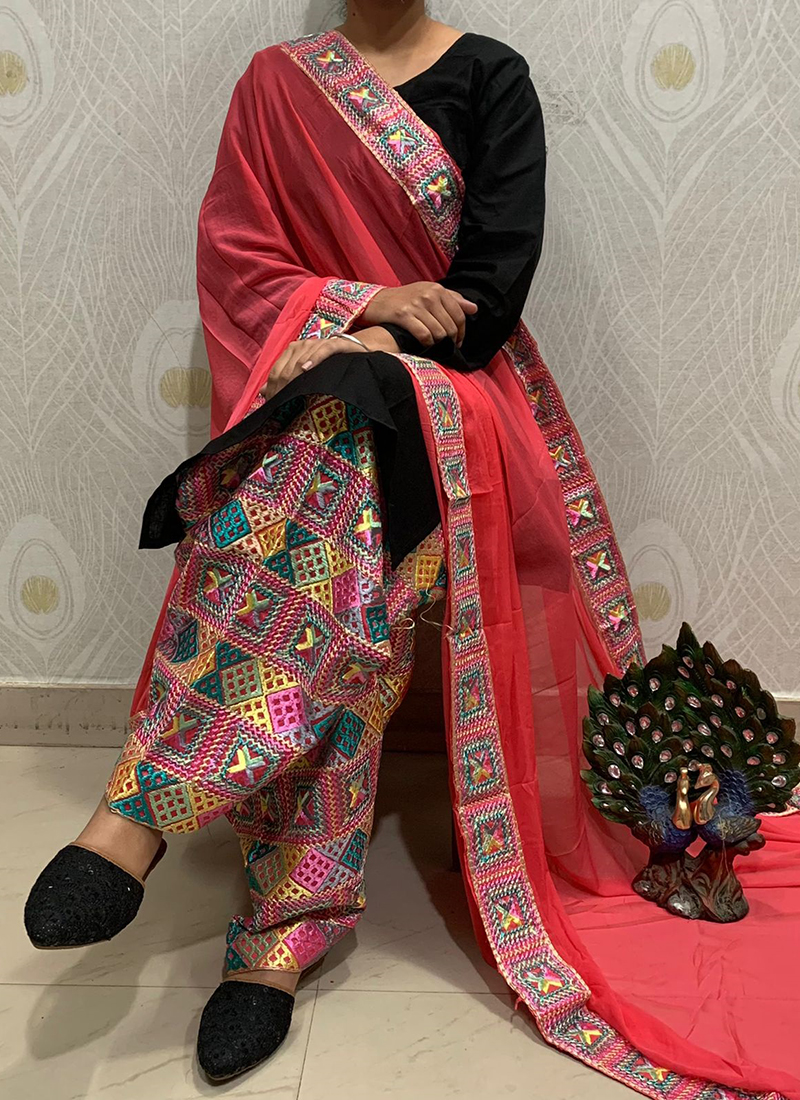


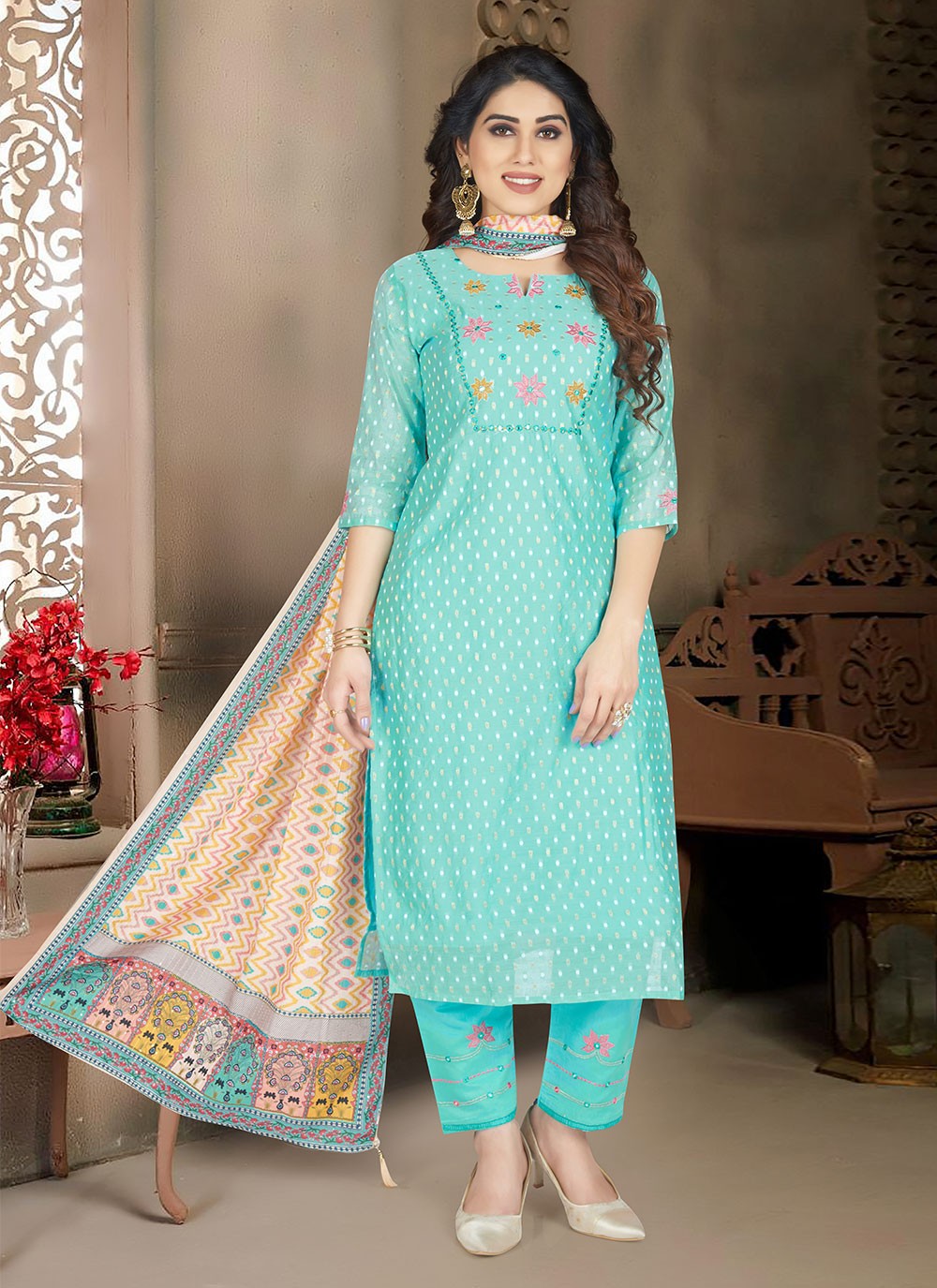









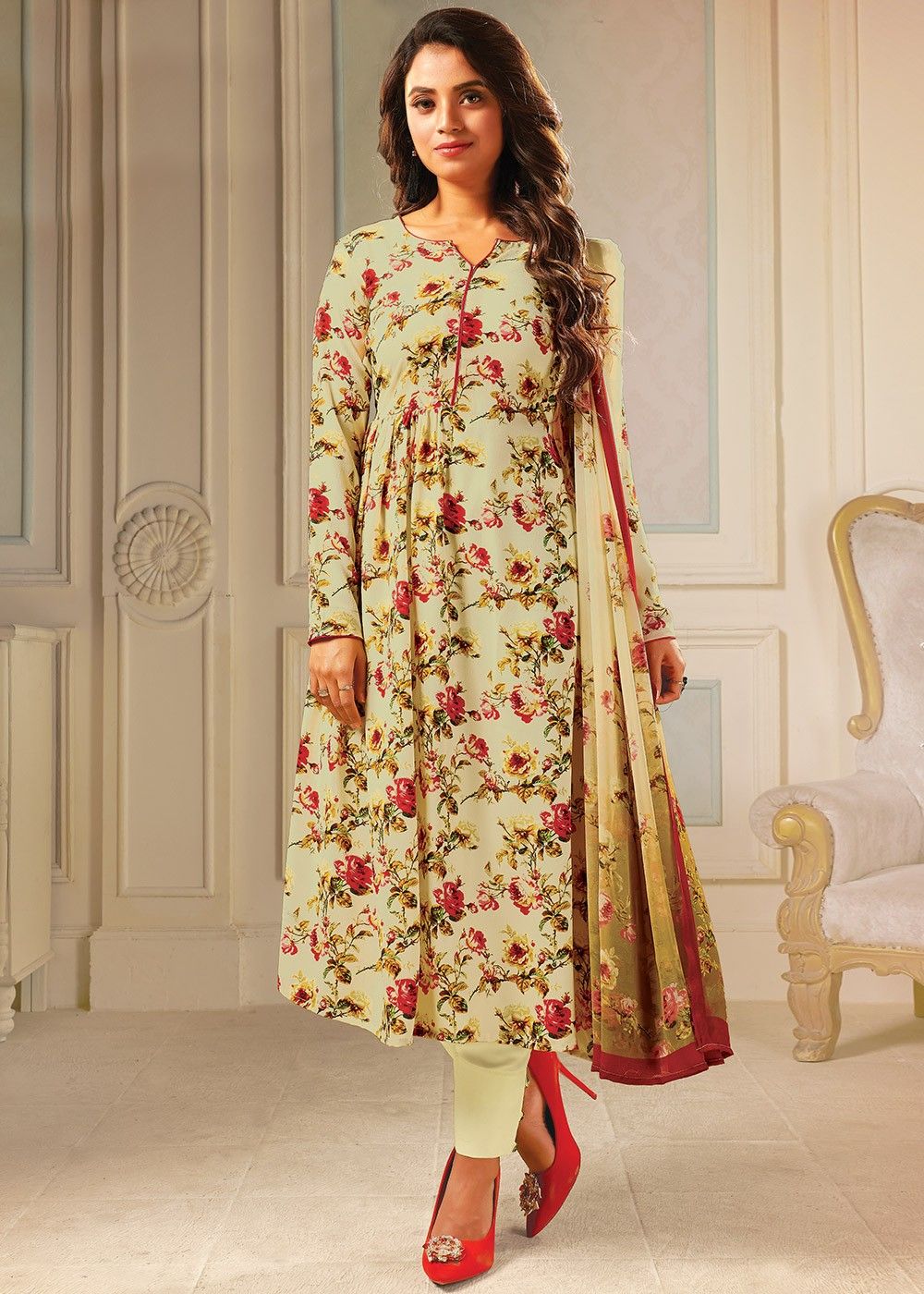

.jpeg)








